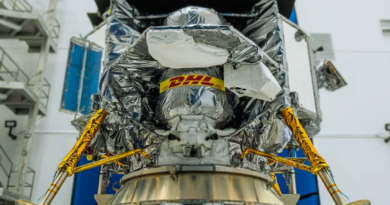China’s Zuchongzhi 3.0 Claims Quantum Supremacy with 105-Qubit Superconducting Chip

China has unveiled a groundbreaking quantum processor, claiming quantum supremacy with a chip 1 quadrillion (10¹⁵) times faster than the world’s most powerful supercomputers. Dubbed “Zuchongzhi 3.0,” this 105-qubit superconducting quantum processing unit (QPU) rivals Google’s latest Willow QPU, setting a new standard in quantum computing performance. Researchers at the University of Science and Technology of China (USTC) in Hefei announced this milestone, highlighting its potential to transform computational capabilities.
The Zuchongzhi 3.0 prototype, detailed in a March 3 study published in Physical Review Letters, completed a complex random circuit sampling (RCS) benchmark task in mere hundreds of seconds. This 83-qubit, 32-layer RCS test outpaced Google’s previous Sycamore chip by a million times, a result published in October 2024. By comparison, Frontier—the world’s second-fastest supercomputer—would need 5.9 billion years to achieve the same feat. These results reinforce claims of quantum supremacy, where quantum computers surpass classical supercomputers in specific tasks.
However, experts caution that RCS benchmarks favor quantum systems, and advances in classical algorithms could narrow this gap, as seen after Google’s 2019 supremacy claim. Still, the USTC team asserts, “This achievement pushes quantum computing boundaries and sets the stage for solving real-world problems with quantum processors.”
Zuchongzhi 3.0 features 105 transmon qubits arranged in a 15-by-7 lattice, an upgrade from its 66-qubit predecessor. Made from materials like tantalum, niobium, and aluminum, these qubits reduce noise sensitivity, enhancing stability. A key factor in quantum computing success is coherence time—the duration qubits maintain superposition for parallel calculations. Longer coherence times enable more complex operations, and Zuchongzhi 3.0 excels here.
The chip also boasts improved gate fidelity and quantum error correction, which are critical hurdles for practical quantum computers. Gate fidelity reflects the precision of quantum gates—operations akin to classical logic gates that manipulate qubit states. Zuchongzhi 3.0 achieved a parallel single-qubit gate fidelity of 99.90% and a two-qubit gate fidelity of 99.62%, trailing Google’s Willow QPU slightly (99.97% and 99.86%). These gains stem from advanced fabrication techniques, including lithographic qubit definition with tantalum and aluminum, and an indium bump flip-chip process that boosts accuracy and reduces contamination.
This quantum leap could unlock applications in cryptography, material simulation, and optimization problems, positioning China as a leader in the quantum computing race.








